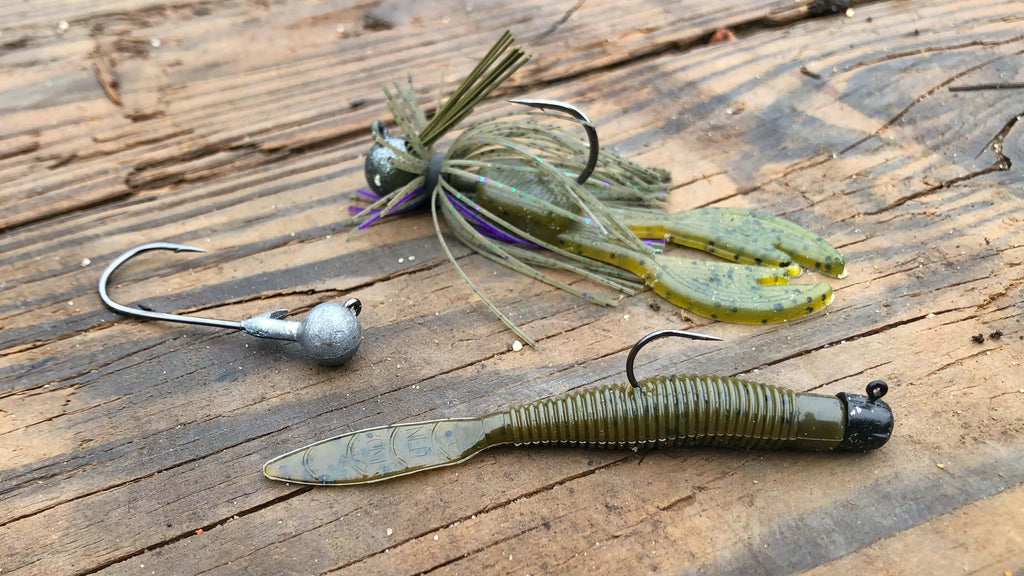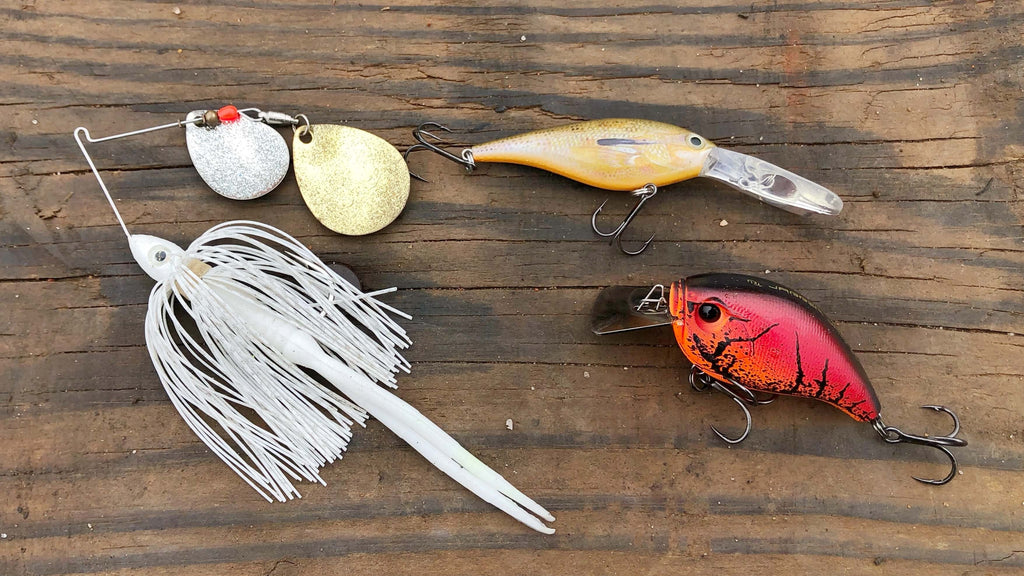By: Shaye Baker
Fishing for bass in cold water can be a little tough. The main reason being bass are cold blooded creatures, which means that their body temperatures are not regulated internally, but instead depend on their surroundings. This causes a bass in 50 degree water to behave very differently from a bass in 80 degree water.
What you’ll notice as the water gets chilly is that bass become a lot more ‘lethargic’. The whole operating system of a bass slows down in colder water. This leads to them not needing as much food since they aren’t exerting as much energy. So, they are less likely to chase baits as they become a good bit more sluggish (or lethargic) overall.
That being said, bass still have to eat at some point and will still bite in cold water. You simply have to adjust your approach accordingly. You’re not going to be able to burn buzzbaits across the top of the water every time you go out. But you don’t have to drag a shaky head all day either.
For the purpose of this article, we’ll define “cold” as water temperature between 40 to 60 degrees. While folks up north would call 60 degrees pretty warm—and the guys down in South Florida would look at it as quite chilly—a bass’s metabolism starts to slow down around 60 degrees and it gets challenging to get a bite below 40.
Low and Slow

We’ll start out with the more obvious approach for cold water bass fishing, which is to slow down to a crawl along with the bass. You don’t have to fish this way in the colder water temps, but dragging something like a shaky head, Ned rig or jig can certainly be very productive bass fishing in cold water.
The Ned rig found the mainstream fishing spotlight around 6 years ago and quickly became one of the most effective and fished with techniques out there, especially for cold water fishing. Such a simple setup, the Ned rig’s effectiveness lies in its simplicity. You can either cut a Senko in half or pick out one of the dozens of Ned rig specific soft plastics out there now, run one up onto a Ned head, and you have an extremely effective little bait for catching fish, even in cold water scenarios.
Though a Ned rig rarely looks like any particular forage, it’s small and therefore doesn’t intimidate the fish. You can still catch bass on bigger baits sometimes in the winter, and we’ll get to that in a minute. But most of the time they don’t really want to exert the little energy they have chasing after something big that is more elusive. But if you crawl a nice little morsel right in front of their nose, they can hardly keep from eating it.
Going a little bigger with a shaky head isn’t a bad idea. And stepping up to a finesse, casting or even football jig works well too sometimes. With the jigs, it’s best to lean towards the finesse jig with a small trailer early in the winter and into the super cold months. But as we near the pre-spawn, even though the water temps are still pretty chilly, that’s when it’s a good idea to transition to the bigger football jigs with full-size craw trailers. At that point, the bass are trying to feed up for the spawn and are more willing to attack a larger meal.
Moving Baits & Lures

Falling back to the front end of the cold water season, as the water temps first start to fall below 60 you definitely don’t need to cut ties with all your moving baits. Crankbaits, spinnerbaits and lipless crankbaits can all produce really well early in the winter, and even deep into the winter in certain situations.
With spinnerbaits, you’ll want to start to slow your presentation down. The double willow leaf baits that work well in the fall should be swapped out for Colorado/willow leaf combos at first and then for double Colorado blades as the waters fall into the lower 50s and below. Changing the blade combination like this offers more resistance and thus allows you to reel a bait a little slower, giving the fish time to attack. The Colorado blades also give off more vibration, which helps the fish find the bait better, especially in stained and muddy water.
Similarly with crankbaits, you can keep fishing them into the winter months but you’re going to need to slow down. The art of fishing a crankbait in cold water is to reel it just fast enough to maintain contact with the bottom. When the water is warmer, you can burn a crankbait back and have it digging into the bottom. But as it gets colder, just keeping contact with the bottom is enough and gives the fish time to find the bait. Finesse crankbaits come into play as well once water temps get particularly cold, say in the 40s. That’s when you’ll want to look at tying on baits like a Shad Rap or Wiggle Wart.
Cover is key, but so is sunshine

In the winter months, you’ll want to focus on two things that can seem kind of contradictory at first: cover and sunshine. When we think about cover, it’s often related more to shade than sunshine. In the summer, if I pitch a bait to a stump I’m going to target the shady side— same for docks, trees and other types of cover. However in the winter, you’ll still want to fish that same stump but pitch to the sunny side instead. And it all goes back to a bass being cold blooded.
The bass will still use the cover to ambush prey, but they’ll sit in the sun to warm their bodies up as much as possible. You see this quite often too as bass will sit out in fairly open water but overtop of a dark hard bottom or around dark chunk rock or boulders. The dark, hard bottom gets warmer than soft mud or silt. It may not seem like much, but if it’s a degree warmer it’s better than a degree colder for a bass that has to sit somewhere regardless.
Targeting these isolated pieces of cover as well as hard bottom areas will help you catch more fish in the winter, whether you’re fishing moving baits or dragging something slow. Remember that the bass will be hesitant to chase something, but still fairly aggressive when an opportunity comes close. With that in mind, try to get your bait as close to cover as possible and don’t hesitate to make repetitive casts to the same spot. Often the first cast or two will wake a fish up a bit and on the third or fourth it will finally bite. Taking all this into consideration, hopefully you’ll have some good cold water outings this winter.
← Older Post Newer Post →


